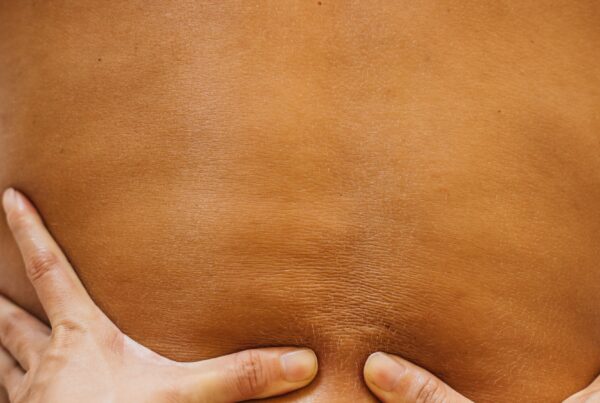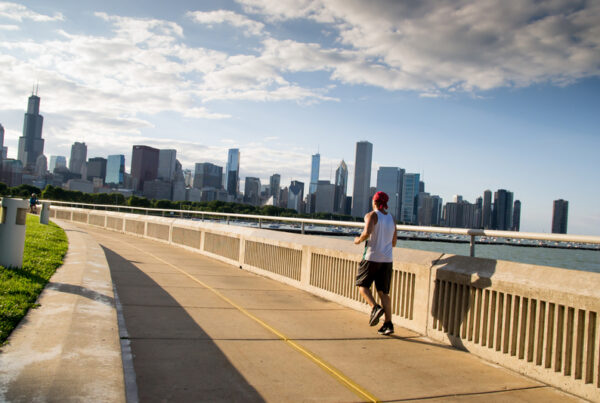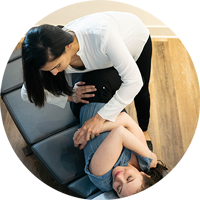Dr. Adam Altman, DC, our Southport Chiropractic Physician shares his marathon experience from a Physical Medicine perspective. Keep reading for his personal story and some exercise examples to prevent injury.
“Last year I ran the marathon despite a number of injuries early on in my training. In 2020 I am running an ultra marathon in the Grand Canyon and these are some of the variations that I use in my everyday training. In order to avoid injury, proper mobility is necessary, as well as strengthening the posterior chain. This is a very common theme I see neglected in most runners; especially those who are training for their first marathon.”
This strength and mobility series can also be used as a body weight work out, for those who are short on time and have trouble keeping up with their prescribed work out routine.
Ankle Mobility Opener
- Keeping the heel down, try to push your knee gently over your toe
- Perform 2-3 sets of 6-10 reps on each side
- You can add weight (as seen with a kettle bell or dumbbell) to help improve mobility in the calf and ankle
Movement to get the heart rate up and prime the body for running
- Bounding back and forth on the ball mounts of your feet, pull your knees up practicing bounding from one foot to the next
- You can add variation in movement from side to side or forward to backward
- Perform for 30 seconds up to a minute, 2-3 sets to help increase heart rate prior to run
- It’s a great movement to simulate your run before going out there and doing the actual movement, will help reinforce proper running mechanics
Reverse lunge (with slider)
- Whether you have the slider or not, this is a great exercise to open the hips and build single leg strength in a lunge position
- Building single leg strength is important because 80% of the running cycle is performed on one leg
- Helps address weaknesses that may develop in a dominant leg stride pattern
- Perform 2-3 sets of 8 to 10 reps per leg
Seated Pigeon
- This is a great exercise to help improve hip mobility as well as work on balance on a single leg
- This helps mobilize tight muscles in the glute, that are put in a shortened position with prolonged sitting
- Perform 2-3 sets of 3-5 reps per leg. Take your time going into this exercise, speed is not your friend
Squats (can be performed with or without bands at the knees and feet)
- The bands are placed above the knee (blue band) and at the feet (red band) to help encourage strengthening of the deep muscles of the glutes. It is important as runners to help build strong muscles here in the hip to help decrease patterns of movement that may lead you susceptible to knee pain, and foot pain
- Perform prior to run 2-3 sets of 6-10 reps to help prime muscles to help support proper running technique
Single Leg Romanian Dead Lift (RDL)
- Great at warming up glutes, hamstrings, and calf musculature that tends to have a lack of stimulation in classic runners warm ups. Runners typically static stretch their hamstrings by bending forward at the waist, keeping the leg straight. This puts increased stress on the lower back and hamstrings, and decreases performance in the running population.
- Perform 2-3 sets of 6-10 reps to help activate the muscles on the back side of the body; glutes, hamstrings, and calf musculature.
Worlds Greatest Stretch, or hip opener with turning to either side
- This is a great mobility exercise to be performed before or after your run
- Hold each position for up to 10 seconds
- First drop the elbow to the inside of the heel of the leg you are lunging forward on
- Then rotate towards the knee that is up
- Follow with turning away from the knee with the hand planted to the inside of the lunged forward leg
- Perform 2-3 reps each leg going through the full stretch pattern
- Great for opening up chronically tight hip flexors, especially after your long runs
Core Exercise: Dead Bug with Kettle Bell
- Every runner needs core support
- Why this exercise is great: Runners need to work on isometric core stability: where the muscles of the core are stable, not changing length, and the hip flexors are lengthening while the core is bracing
- Eccentric lengthening of the hip flexors is an excellent solution to most runners who have chronically tight hip flexors. Their issue is that the hip flexors are both propelling the motion of running and trying to stabilize the spine, which is a recipe for disaster with increased mileage.
- Cues: deep belly breathe trying to pull air into pelvis, think deep yoga breaths using the diaphragm vs the chest to pull air in
- Extend one leg out at a time, maintaining pressure into the floor as you perform the exercise. This is done by inhaling as you extend the leg out. Exhale as you bring the leg back to 90 degree position in the hip
- Perform 5-10 reps per side, 2-3 sets. Great before or after the work out as an active warm up, or cool down.
If anything is stopping you from feeling your best, we’re here to help. To book an appointment, click the button below.
Schedule an Appointment








